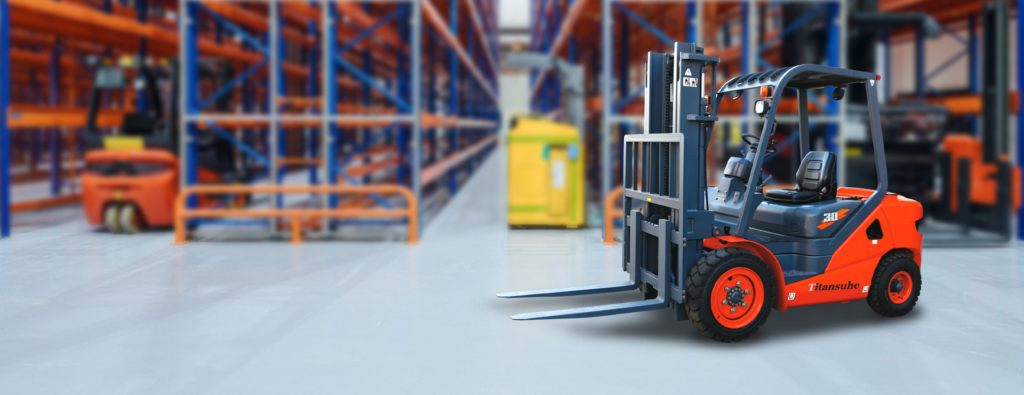
Forklifts are a vital part of modern warehouses, construction sites, and manufacturing facilities. They play an intrinsic role materials handling china in the efficient movement of goods, making them crucial in several industries. This article delves into the different types of forklifts, their uses, safety considerations, and maintenance tips.
What is a Forklift?
A forklift, also known as a lift truck or powered industrial truck, is a powered vehicle equipped with two forks or prongs at the front. These forks can be raised and lowered to lift, move, and heap materials. Forklifts are made to carry heavy loads and can be managed both inside your home and outdoors, depending on the model.
Types of Forklifts
Forklifts come in numerous kinds, each suited for specific tasks and environments:
- Counterbalance Forklifts
Counterbalance forklifts are the most common type. They have a weight at the backside that counteracts the weight of the load at the front, enabling stability. They are versatile and can operate in narrow aisles, making them suitable for warehouses and distribution centers. - Reach Forklifts
These forklifts are made to extend their forks beyond the beds base of the truck. They are ideal for stacking pallets in high shelving and navigating narrow spaces. Reach forklifts are generally used in warehouses with limited section width. - Pallet Jacks
Pallet jacks, also known as hand pallet trucks, are the simplest form of forklifts. They are hand managed and used for moving pallets over short miles. While not as powerful as electric forklifts, they are necessary for small-scale operations. - Rough Surfaces Forklifts
Rough surfaces forklifts are made for outdoor use on uneven surfaces, such as construction sites. They have large, rugged wheels and increased ground clearance, letting them navigate challenging environments. - Electric Forklifts
Electric forklifts are powered by batteries and are quieter and more environmentally friendly than their petrol or diesel counterparts. They are suitable for indoor use, especially in areas where air quality is a concern.
Applications of Forklifts
Forklifts have a wide range of applications across various industries:
- Warehousing and Distribution
In warehouses, forklifts are very important for packing and unloading goods from trucks, moving inventory, and stacking products in high racking systems. - Manufacturing
Forklifts are used in manufacturing to hold garbage to production lines and move finished goods to shipping areas. - Construction
On construction sites, forklifts are utilized to lift and transport heavy materials, such as steel supports, bricks, and pallets of concrete. - Retail
Forklifts play a role in retail environments, especially in large stores and warehouses, where they help manage inventory and ensure products are readily available for customers.
Safety Considerations
While forklifts are incredibly useful, they can also pose risks if not managed safely. Here are some key safety considerations:
- Training and Certification
Operators must undergo proper training and acquire certification to operate forklifts. This training includes understanding the apparatus, load limits, and safe operating procedures. - Regular Assessments
Routine assessments of forklifts are very important to ensure they are in good working condition. Operators should check brakes, lights, and forks before use. - Load Capacity
Understanding the stress capacity of a forklift is essential. Exceeding beyond this limit can lead to tipping or losing control of the forklift. - Proper Packing Techniques
Loads should be smoothly distributed and secured before lifting. Operators should ensure visibility is not clogged and look after a safe distance from pedestrians. - Use of Personal Protective Equipment (PPE)
Operators should wear appropriate PPE, such as hard hats, safety shoes, and high-visibility clothing, to minimize the risk of injury.
Maintenance Tips
Regular maintenance is critical for the safe and efficient operation of forklifts. Here are some maintenance tips:
- Daily Checks
Before each shift, operators should conduct daily checks to ensure the forklift is in safe operating condition. This includes checking fluid levels, brakes, and tire pressure. - Scheduled Maintenance
Forklifts should be serviced regularly according to the manufacturer’s guidelines. This includes changing fluids, replacing filtration systems, and examining components. - Battery Care
For electric forklifts, proper battery maintenance is essential. Operators should regularly check battery fluid levels and ensure batteries are charged properly. - Sanitation
Keeping the forklift clean not only improves its appearance but also prevents potential issues. Debris and dirt can impact the functionality of various components.
The future of Forklifts
The forklift industry is growing with advancements in technology. Electric forklifts are becoming more prevalent because of their environmental benefits. Additionally, automation and robotics are making their way into material handling, leading to the development of autonomous forklifts that can operate without human involvement.
Conclusion
Forklifts are very important tools in several industries, providing efficiency and safety in material handling. Understanding the different types, applications, safety considerations, and maintenance practices is essential for operators and employers. As technology continues to advance, the role of forklifts will definitely adapt, ensuring they remain integral to the future of logistics and material handling.